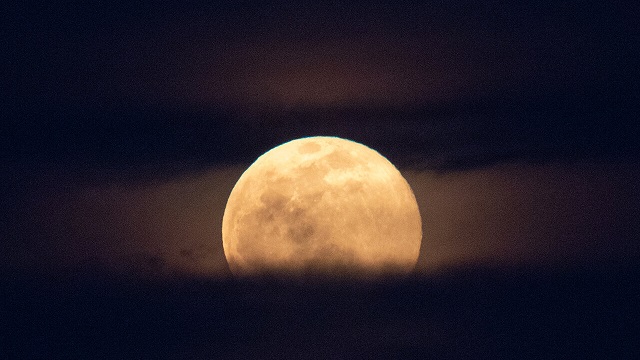The Pink Supermoon Can Be Seen Tonight, Monday Night
It will be the only one in 2021.

A supermoon rises behind the U.S. Capitol, Monday, March 9, 2020, in Washington. (Credit NASA Joel Kowsky)
The pink supermoon is coming tonight, the night of the full moon. You will be able to see it around the world. It will be the first supermoon of the year and the only pink one. The second and final supermoon for the year will come in one month’s time on May 26.
A supermoon occurs when the moon is within 90% of perigee — one of the closest points to Earth which it can reach. When this happens the moon will appear about 7% bigger and about 15% brighter than a typical full moon. But, of course, the moon is not actually any bigger. It just looks that way because it is closer to the Earth.
According to NASA, other names for this moon include the Sprouting Grass Moon, the Egg Moon, and among coastal tribes of North America, the Fish Moon, as this was when the shad swam upstream to spawn.
–
[embedded content]
For Eastern Christianity (which bases its calculations on the Julian Calendar) this is the full Moon before Easter, called the Paschal Moon. This is one of the years where the different calendars used by Western and Eastern Christianity make a difference. Eastern Christianity will be celebrating Easter on Sunday, May 2, 2021. Western Christianity celebrated Easter on Sunday, April 4.
For Hindus, this is Hanuman Jayanti, the celebration of the birth of Lord Hanuman, celebrated in most areas on the full Moon day of the Hindu lunar month of Chaitra, which (in India’s time zone) is Tuesday, April 27, 2021.
For Buddhists, especially in Sri Lanka, this full Moon corresponds with Bak Poya, commemorating when the Buddha visited Sri Lanka and settled a dispute between chiefs, avoiding a war.
The moon will not appear pink all night long, though. The best time to see the pink supermoon will be around 11:30 P.M.
Dr Darren Baskill, physics and astronomy lecturer at the University of Sussex, told Science Focus, “The Moon will slightly change color depending on where it appears in the sky. It’s all to do with the curvature of Earth. When you stand outside look directly up, you’re looking through about 30km of atmosphere. But look to the horizon and you’re looking through about 300km of atmosphere.”
“As blue (shorter wavelength) light ‘bends’ or ‘scatters’ more than red light, not as much of it will reach your eye through 300km of atmosphere. So only the more red colors will reach you. This means the Moon (and the Sun) take on a reddish color when they’re on the horizon.”
Read more about: NASA, Pink Supermoon, Th Moon



